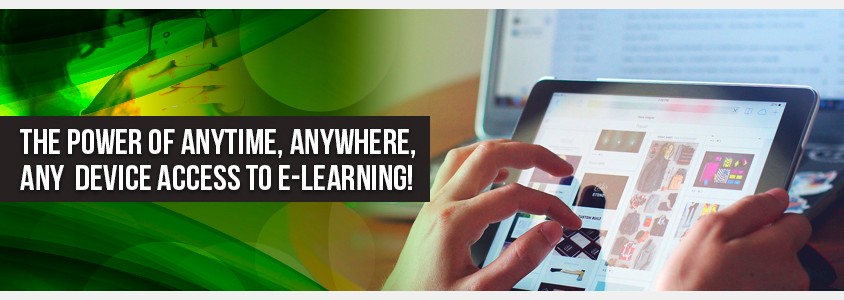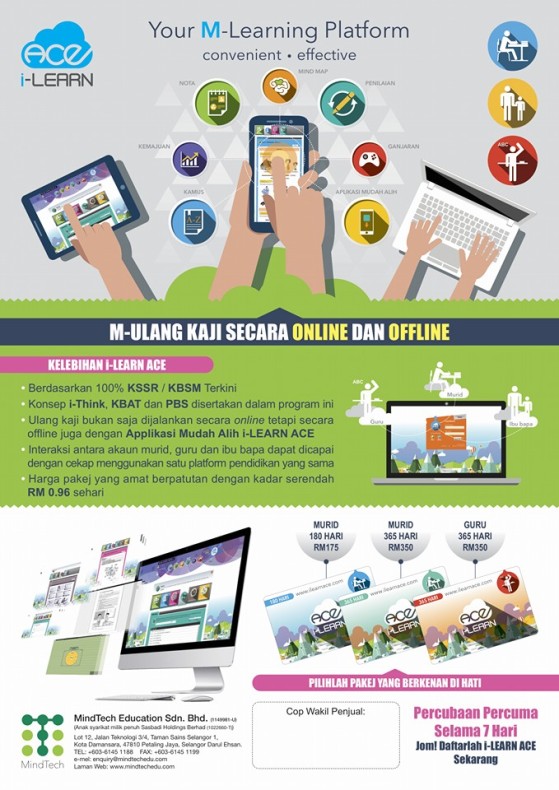Computers can never take the place of the teacher, but they improve work efficiency in class.
OVER the last few decades, many scholars have attempted to learn more about how information and communication technologies (ICT) have changed our lives and more importantly, how they can be effectively used for teaching and learning.
Many studies have reported about student and teacher behaviours, pedagogies, assessment tools, virtual learning environments and issues related to online instruction.
Researchers are curious about the new opportunities and challenges that lie in ways to employ technology to enhance the process of teaching and learning.
Using ICT in education is not out of the ordinary. In fact, usisng LCD projectors to display our PowerPoint slides and playing video or audio files in the classroom, are some of the many ways of using technology for teaching and learning.
Scholars and researchers predict that teachers will not have their jobs taken over by computers, but they will have their jobs enhanced in terms of efficiency in administration, assessment, teaching delivery, knowledge sharing and student participation.
The right tools
A paper in the March 2015 issue of the The Social Science Journal, the official journal of the Western Social Science Association reported that students prefer interactive animations and videos in their learning. The study carried out in a Malaysian university indicated that it was important for us to understand the students’ attitudes and acceptance of using technology in learning as it would greatly affect their learning outcomes.
For a start, to support the basic teaching of lessons in class, teachers could use Microsoft OneNote, One Drive, Office Mix and PowerPoint to design lesson plans and self-directed contents. The use of self-directed content with the Office Mix is quite easy. For example, an ordinary PowerPoint presentation can be enhanced with voice over or video of the teacher speaking to help demonstrate or explain formulae and concepts.
This would be helpful as supplementary materials to tackle the difficult or complicated topics require more detailed explanations. Students can then use them to replay, revise or learn at their own pace.
OneNote enables the teacher to incorporate files such as video clips, spreadsheets, hyperlinks into a file and organise them according to dates or chapters or topics. Students could be engaged in interactive activities using OneNote by responding to quizzes and interactive exercises to make lessons more appealing.
E-learning is powerful and influential in the classroom and eleswhere, as long as there is a computer and internet access.
Learners can replay, repeat and forward at will on any aspects of the structured learning content, as long as they are in front of the computer.
The idea is to have students love learning and get them to actively participate in the process. Educators not only need to use technology to deliver lessons, there is a need to engage students in interactive activities, make way for them to use their creativity, allow them to construct their own understanding and give them time to reflect on their learning experiences. All these could be possible if educators change their ways and mindsets.
This approach is what scholars call the constructivist approach. Using the constructivist approach in education is suitable for today’s blended learning model where technology is incorporated into traditional teaching methods to open boundaries. Students themselves could be the knowledge developers.
Therefore, teachers are not necessarily the epitome of knowledge as students themselves are trained to to develop knowledge using materials which they could manipulate to create dynamic learning experiences.
The role of a teacher has gradually shifted from that of a provider to facilitator. Reflective teaching requires teachers to develop themselves professionally by reflecting on their teaching styles, student feedback, student behaviour and technology use with the purpose of improving the students’ learning outcomes. To become a reflective teacher, those who teach may even need to break old habits, learn new tricks and adopt new technologies.
Free Online Resources
The birth of the Massive Open Online Courses (MOOCs) and Open Learning Resources (OLRs), and later a tuition-free university called University of the People have shaken the world and to a certain extent, broken down boundaries.
MOOCs are free online courses open to all. Usually, for a small fee, the user could also earn a certification as proof of course completion. The online courses are designed by reputable experts and offered by various universities. One example of a giant MOOC provider is Coursera (
http://www.coursera.org/) which has about 109 partner universities and organisations with 12 million registered users at press time.
Meanwhile two of the the world’s top universities the Massachusetts Institute of Technology and Harvard University founded Edx (
http://www.edx.org/).
Such online resources are not only credible, but serve as a reference source for students, teachers and adult learners. These are suitably used for blended learning in today’s classrooms. If students have basic Internet access, teachers could use online applications to engage the students in active learning, online discussions and post materials online. Besides that, teachers could also encourage learners to access online content and tools, collaborate and discuss with peers worldwide. Therefore, the teacher is instrumental in creating this opportunity to open up the borders of the classroom or what scholars describe as “flattening the classroom”.
To drive home the point, universities are accountable for the quality of graduates they produce. Churning out thousands after thousands of graduates without a good employment rate to show, may indicate that we have not trained them to power a knowledge-driven economy and to meet industry needs. With the latest inventions and production of gadgets and equipment to make work easier and faster for us, universities must train graduates to do what machines cannot.
Dr Cheah Phaik Kin is an Assistant Professor in the Faculty of Arts and Social Science, Universiti Tunku Abdul Rahman Perak Campus. She is undertaking research projects in online instruction and e-learning to investigate the integration of technology in education. She can be reached at cheahpk@utar.edu.my.
This is the first in a series of articles on Science, Technology, Engineering and Mathematics from Universiti Tunku Abdul Rahman.
http://www.thestar.com.my/News/Education/2015/05/10/ELearning-is-here-to-stay/










